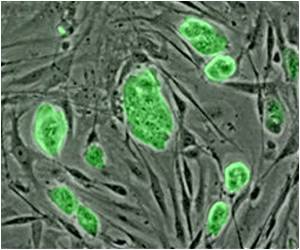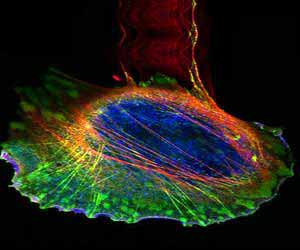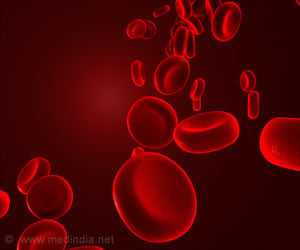This is an important discovery, as it shows that the molecules are active due to many variables of combinations of tissue and disease.

A study published July 6 in the journal Oncotarget reports on a newly discovered category of tRNA fragments as well as shows that all tRNAs are rich sources of very diverse short molecules whose characteristics depend on a person’s gender, population, and race and differ according to tissue and disease type.
“The discovery has potential implications for precision medicine as it shows that the identity of molecules that are active in a given combination of tissue and disease is decided by more variables than previously thought,” said Isidore Rigoutsos, Director of the Computational Medicine Center (CMC) at Thomas Jefferson University.
During the last several years, research efforts with human cell lines revealed that the genomic loci encoding tRNAs give rise to shorter tRNA fragments (“tRFs”). Until now, four categories of tRNA fragments whose sequences are a segment of the mature tRNA had been known. Two of the categories are the “5´ tRNA halves” and “3´ tRNA halves.” The halves arise from the mature tRNA through cleavage at the anticodon that splits the tRNA into two pieces, each 30-35 nucleotides (nt) in length. The other two categories are the “5´-tRFs” and the “3´-tRFs,” each approximately 20 nt in length. The start of the 5´-tRFs coincides with the start of the mature tRNAs. Analogously, the end of the 3´-tRFs coincides with the end of the mature tRNAs.
Interest in studying tRNA fragments has been increasing swiftly as studies have shown that the fragments have regulatory roles and implicated individual fragments in cellular processes such as translation initiation, response to viral infection, response to DNA damage, etc. Indeed, members of Jefferson’s CMC recently reported that tRNA halves are involved in cell proliferation in hormone-sensitive cancers such as breast and prostate cancers.
“The previous work on tRNA fragments in the human and mouse genomes had been based on model cell lines and focused on tRNAs encoded by the nuclear genome” said Dr. Rigoutsos. “Little was known about tRNA fragments in human tissues or about fragments from mitochondrially-encoded tRNAs. Our recent reports that the nuclear genomes of human and other primates contain many sequences that look like mitochondrial tRNAs suggested to us that we should include mitochondrial tRNAs in this analysis.” A team led by Rigoutsos set out to study tRNA fragments by analyzing data from hundreds of people, both healthy individuals and patients.
Advertisement
In light of these findings and since tRNAs are repeat sequences themselves, the team had to devise a complex and stringent scheme with which they mapped the deep sequencing reads. “We spent a lot of time, nearly half of the duration of the project, optimizing our mapping approach,” said Rigoutsos.
Advertisement
The team also found that the mitochondrially-encoded tRNAs, just like the nuclearly-encoded ones, are very rich sources of fragments. In fact, mitochondrial tRNAs give rise to all five categories of fragments, as do the nuclear tRNAs. Interestingly, the mitochondrial fragments differ characteristically in their length attributes from their nuclearly-encoded counterparts.
The analysis also revealed that the populations of generated tRNA fragments and attributes such as fragment abundance, fragment length, and the fragments’ starting and ending points depend on a person’s race, population, and gender. Notably, the team also found that these fragment attributes change between tissues, between healthy individuals and patients, and between disease subtypes. Unexpectedly, the new category of internal tRNA fragments contributes much of the difference observed across races, populations, genders, and tissues.
It is worth noting that the expression profiles of the tRNA fragments in a given tissue persist across dozens of individuals if the individuals share the same race, population and gender. This suggests that the fragments have a constitutive nature. Healthy samples also show that a given tRNA will give rise to different fragments in different tissues. On the other hand, in a given tissue, the same tRNA sequences will produce different fragments in health and disease and across disease subtypes.
“Last year, we reported analogous findings with microRNA isoforms. We did not know whether tRNA fragments would behave in the same manner,” said Dr. Rigoutsos. “Having a second category of regulatory non-coding RNAs that depend on a person’s attributes means newly recognized complexity. At the same time, we appear to have one more way to study disease that takes into account the patient’s gender, and racial and population backgrounds.”
Source-Newswise









